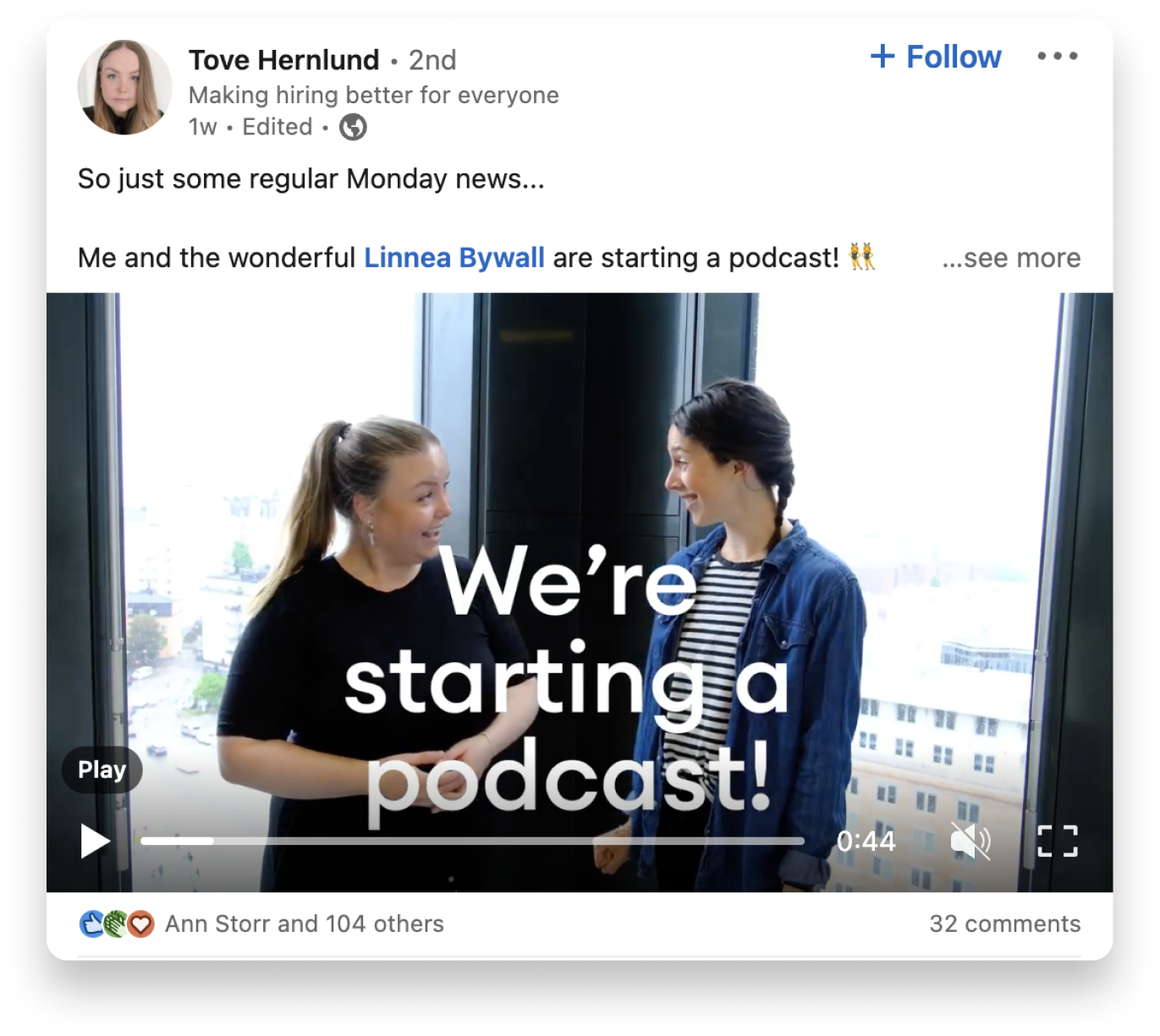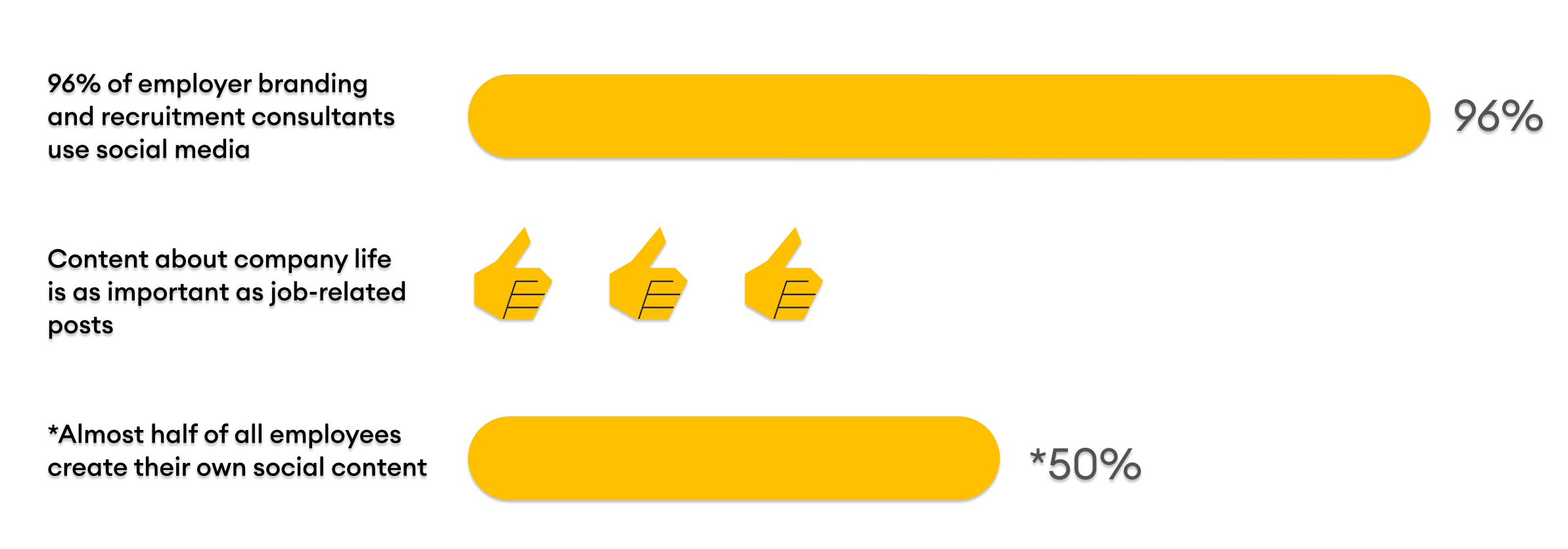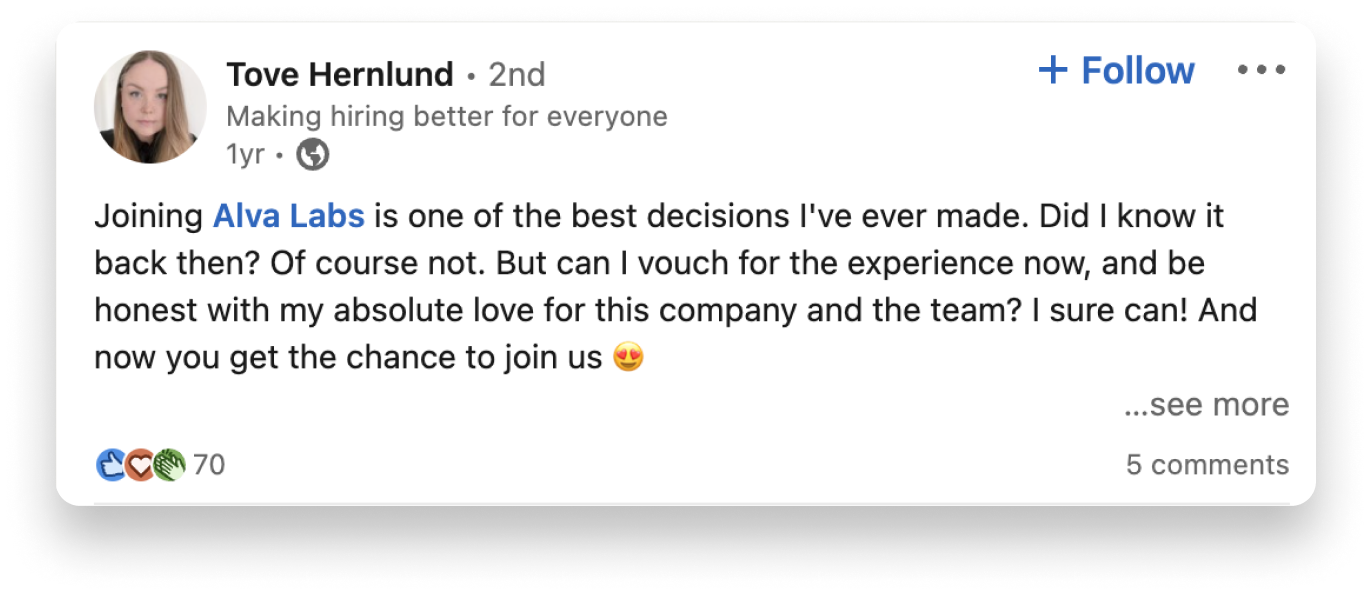In a world where consumers primarily consult their trusted social networks for referrals and brand preference, it’s more important than ever for organisations to have a strong social media presence and employer branding. One of the most cost-effective ways to promote your employer brand is to leverage the resources you already have on hand—your employees.
While employee advocacy is a relatively new concept, sophisticated organisations are already involving their employees on social media, having spotted the inherent merits of employee engagement. From creating an authentic connection with consumers to increased engagement and higher click-through-rates, there’s no doubt it: employee advocacy on social media is the future.
The lesson: Rather than overspend your company budget on PR agencies and social media influencers, why not include your employees in your current marketing efforts? But beware, for employee advocacy to work, it has to be mutually beneficial for your organisation and your employees.
Read on to learn how to launch a successful employee advocacy strategy for social media, and turn your team into brand champions.
What is employee advocacy?

Employee advocacy refers to employees who are committed to sharing your organisation’s values and mission with their own social networks. Simply put, they’re your brand ambassadors. While employee advocacy exists across multiple channels, the whole phenomenon has been transformed by social media— given the platform’s huge outreach.
Social media advocacy comes down to your employees sharing company content on social platforms like LinkedIn, Instagram, and Facebook. While some employees re-share existing content like blog posts, events, product launches, and job ads, posts can be original too, and offer a sneak peek into your company culture.
Whether it’s a snapshot of your Christmas event, or a picture of your sales team attending a cool conference, employee advocacy can make you look good—both in front of your customers and new talent.
Benefits of social media employee engagement

Involving your employees in your social media marketing strategy can do wonders for your organic outreach and engagement rates. For instance, the click-through-rate on a piece of content is twice higher when shared by an employee than when shared by the company directly.
Likewise, a strong advocacy strategy benefits employees too, helping them build their own reputation, expand their networks, and become more immersed in your workforce.
What employee advocacy on social media can do for your business:
- Increase outreach: One employee who shares up to three pieces of brand content a day can add up to a whopping 23 million in extra reach over a year.
- Build expertise: Adding commentary to shared content transforms employees into co-creators, and can help make them appear more knowledgeable about your brand.
- Generate qualified leads: When employees post positively about their workplace and company culture, others absorb this information, whether consciously or passively. This lends credibility to your brand, creating a favourable picture of your company.
- Boost sales: A study by LinkedIn showed how employees working in sales tended to create 45% more opportunities per quarter when they shared work-related content on LinkedIn. This doesn’t come as a surprise, considering brand awareness and brand sentiment are proven to contribute to increased sales.
- Attract quality candidates to your doorstep: Companies with socially engaged employees are 58% more likely to attract top talent. By sharing your content, your employees can help build affinity with the talent pool you’re looking to break into, and even speed up the candidate journey.
How to get started: a quick checklist
.png?width=4096&name=Group%2031%20(1).png)
If you’re starting from scratch, don’t worry! We’ve created a checklist to help get you started. Considering we’ve used this checklist ourselves, you’re in good hands.
- Create an employee experience worth talking about: Be honest about where your company culture is at. Are you in a comfortable position to promote the employee experience on social media?
- Have a culture of trust in place: If you can trust your employees to do their job, you should be able to trust them to talk about their work and your brand openly.
- Encourage participation, but don’t enforce it: To stay on your employees’ good books, avoid forcing everyone to participate. It should be considered optional, and targeted toward the most relevant employees who stand to gain the most from posting about your brand.
- Map out your social media policy: Set clear guidelines on how employees should post. This will help create unity within your overarching social media strategy and maximise impact.
- Encourage authenticity: While your employees can be your biggest brand advocates, they shouldn’t have to mimic your company voice. Encourage them to keep their own voice when engaging with their personal networks.
- Avoid salesy content: Try and steer clear of sales pitches disguised as social media posts. Think, content is king, so try and keep content rich, helpful, and interesting.
- Treat your employees as heroes: Your employees should play front and centre in your employee advocacy strategy. While they’re talking about your brand of course, they’re telling a story from their point of view. Let them.
Six steps to launching your employee advocacy strategy
- Create a social media playbook for employees
- Run social media training sessions
- Find your brand champions
- Introduce community guidelines
- Create a specific channel for employee social media activity
- Measure impact
1. Create a social media policy in the workplace for employees
The first and most important step is to sit down and think about what you’re trying to accomplish with your employee advocacy program. What are your goals? How will you measure impact?
Next, map out your content strategy. Aim for a mix of company news, product-specific content, and general human-interest content. And remember: since your goal is to drive engagement with employees and their networks, you’ll need to provide relevant content that extends beyond just talking about your company.
For instance, at Alva, our Social Media Marketing Manager, Maja, created a social media playbook for employees, with a complete overview of our employee advocacy efforts. The guidelines contain suggestions on topics to post about, how to talk about certain things, and even a list of interesting groups and communities to follow.
Extra tip: Include social media recruitment into your strategy. Specifically, how can your employees share your job ads, talk about open positions, and new hires? Jot it all down.
2. Run social media training sessions
So you have a shiny new social media playbook for employees. That’s great, now what? The next step is to ensure your employees know how to use your handbook! Walk them through training sessions and provide ample opportunities for questions and clarifications.
3. Find your brand ambassadors

Certain people within your team can add immense value to your employer branding, especially if they’ve already cultivated a loyal following on their own social media accounts.
What’s more, some employees are more motivated to share your content than others, and will therefore value such a strategic partnership. Harness these people and tap into their knowledge and experience for maximum engagement.
4. Introduce community guidelines
Create expectations on what’s okay to post about and what’s deemed inappropriate, harmful, or unprofessional for your brand. While this may seem like common sense, it pays to be cautious.
An important thing to flag here is that while community guidelines are welcomed, there’s a fine balance between guidelines and censorship. Above all, you want to give your employees the freedom to post about what they want.
5. Create a specific channel for social media employee advocacy
One of the best ways to engage your team and cheer each other on is to have a dedicated channel announcing the release of each social media post. For instance, at Alva we have a Slack channel specifically for LinkedIn activity. This enables us to loop everyone in on the latest LinkedIn happenings, and provides a chance for people to like, share, and comment on each other’s content.
Overall, celebrating your employees’ social media posts can be a fantastic way to boost team morale across the company.
6. Measure impact
Keeping track of your results is the best way to see whether your employee advocacy efforts are paying off. Take a look at your engagement rates on shared content, your follower count, as well as key demographics of those you’ve engaged. With the right platform, you can even see whether this engagement has driven site traffic, new hires, and extra sales.
Final word
When you empower your employees to be advocates on social media, you aren’t just boosting their own reputations, but are shifting the trajectory of your business too. Whether you want to ramp up your content marketing, acquire fresh talent, or generate leads, a thoughtful employee advocacy program could very well help get you there.






